Two experts discussed molecular phenotypes and functional response biomarkers during the State of the Art Lecture: Precision Medicine in Systemic Sclerosis on Sunday, Nov. 17.

Francesco Del Galdo, MD, PhD, Head of the Raynaud’s and Scleroderma Programme at NIHR Leeds Musculoskeletal Biomedical Research Centre, United Kingdom, discussed data-driven approaches to managing the clinical manifestations of systemic sclerosis (SSc). Elizabeth Volkmann, MD, MS, Director of the University of California, Los Angeles (UCLA) Scleroderma Center, and Founder and Co-Director of the UCLA CTD-ILD Program, discussed functional response biomarkers for systemic sclerosis-associated interstitial lung disease (SSc-ILD).
The session will be available on-demand to all registered ACR Convergence 2024 participants after the meeting through Oct. 10, 2025, by logging into the meeting website.
About 15% of patients with SSc will have at least one severe organ manifestation over time. These clinical manifestations are heterogeneous and vary by organ type, manifestation severity, and development time. A vascular and fibrotic disease continuum can be traced throughout the natural history of SSc.

Dr. Del Galdo looked at patients with Raynaud’s phenomenon from the Very Early Diagnosis of Systemic Sclerosis (VEDOSS) database to better understand when SSc develops. He found that patients without antinuclear antibodies had a very low risk of developing SSc. However, patients with multiple red flags had a higher risk of developing SSc over time. Thus, the autoantibody profile in skin involvement is strongly predictive of skin severity and associated with distinct molecular phenotypes.
Dr. Del Galdo then highlighted data analyzing skin biopsies from VEDOSS. While these patients had no clinically detectable skin involvement, findings from the study revealed that these patients did have scleroderma.
“Very early diseases are biologically active, they are tractable, and they offer the best opportunity of maintaining a minimal clinical impact of scleroderma for patients. Which at the end of the day is what we want for our patients,” Dr. Del Galdo explained.
Notably, ILD is the leading cause of death in SSc. Despite the emergence of effective and approved therapies, survival rates have not improved. Part of this may be because there is a lack of fundamental tools needed to make informed treatment decisions for patients, Dr. Volkmann said.
Many clinicians take a watch-and-wait approach and only start therapy for SSc-ILD when a patient has experienced disease progression. The issue with this approach is that a patient can sustain irreversible lung damage and endure diminished quality of life during this time of waiting, she explained. However, clinicians currently lack the tools to determine which patients should receive intervention. These determinations are commonly made based on clinical features, but the presence or absence of these features does not consistently predict outcomes.
“One of the leading prognostic biomarkers in this space is a protein called KL-6, which can be measured for in the circulation,” Dr. Volkmann said.
In one post hoc analysis, patients with elevated KL-6 levels had an accelerated rate of decline of forced vital capacity (FVC) compared to those without, she reported. Another study found that baseline KL-6 predicted response to therapy in patients treated with cyclophosphamide (CYC) and mycophenolate mofetil (MMF). In a large prospective observational study, high KL-6 was found to predict ILD progression over 12 months in patients treated with MMF.
Predictive biomarkers are often harder to come by. One study found that treatment assignment affected the predictive capacity of biomarkers. While observational studies can continue to reveal prognostic biomarkers, clinical trials represent ideal cohorts for discovering predictive biomarkers.
Another issue is that there are no valid treatment response biomarkers for SSc-ILD. Studies have found that persistent elevation of C-reactive protein predicts mortality in SSc-ILD and that an increase in KL-6 predicts SSc-associated pulmonary fibrosis in MMF and CYC-treated patients.

Registered ACR Convergence 2024 Participants:
Watch the Replay
Select ACR Convergence 2024 scientific sessions are available to registered participants for on-demand viewing through October 10, 2025. Log in to the meeting website to continue your ACR Convergence experience.
